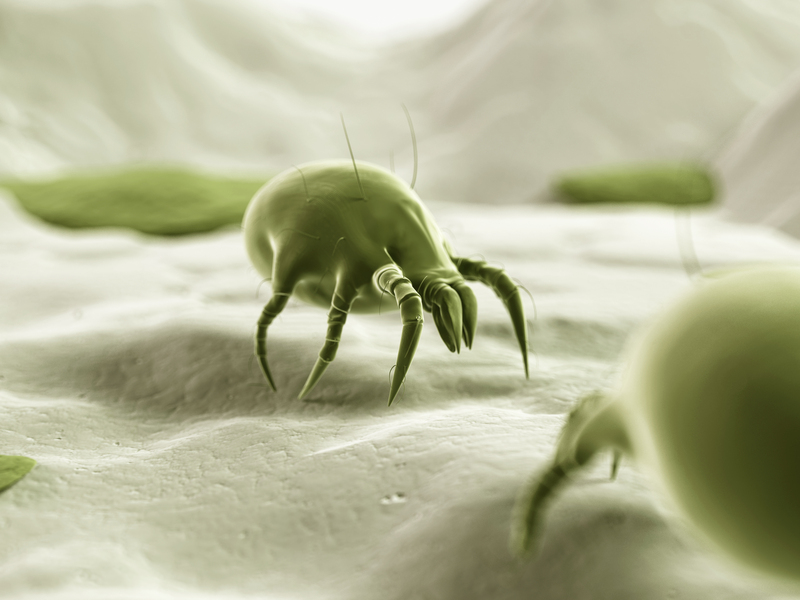Damage-Free Methods for Cleaning Walls
Posted on 19/08/2025
Preparation and Precautions
Before you start cleaning, it's important to prepare the area and take some necessary precautions:
- Test in a Small Area: Always test your chosen cleaning method in a small, inconspicuous area of the wall to make sure it doesn't cause any damage.
- Protect Flooring and Furniture: Lay down drop cloths or plastic sheets to protect your flooring and furniture from water and cleaning solutions.
- Avoid Excessive Water Use: Excessive water can damage walls, especially those with drywall or plaster. Use the minimum amount of liquid necessary to get the job done.
- Wear Gloves: Protect your hands by wearing gloves, especially if you're using any cleaning agents.

Cleaning Painted Walls
Painted walls are highly sensitive to scrubbing and harsh chemicals. The following methods are safe for most types of paint, including latex and oil-based paints.
Dusting and Dry Cleaning
Regular dusting can help keep walls looking fresh. Use a microfiber cloth, a feather duster, or a vacuum with a brush attachment to remove surface dust and cobwebs. For areas that are harder to reach, you can use an extendable duster.
Simple Soap and Water Solution
Mix a small amount of mild dish soap with warm water. Dampen a soft sponge or cloth with the soapy solution, wring out any excess liquid, and gently wipe down the walls. Rinse the sponge often to avoid spreading dirt around. After cleaning, use a damp cloth with plain water to remove any soap residue. Finish by drying the wall with a clean, dry towel.
Spot Cleaning with Baking Soda Paste
For tougher stains, such as crayon marks or scuffs, make a paste from baking soda and water. Apply the paste to the stain and gently rub it with a soft cloth or sponge. Be careful not to scrub too hard, as baking soda is mildly abrasive and can damage the paint. Wipe away the residue with a damp cloth and dry the area.
Cleaning Wallpapered Walls
Wallpaper can be delicate and requires special care to avoid damage. Here's how to clean it without causing harm:
Dusting and Spot Cleaning
Dust wallpaper regularly to prevent dirt buildup. Use a dry cloth or a vacuum with a soft brush attachment. For spot cleaning, use a damp cloth to gently blot the stain. Avoid rubbing, as this can spread the stain and damage the wallpaper.
Cleaning with Vinegar Solution
Mix a solution of equal parts water and white vinegar. Dampen a soft cloth with the mixture, wring out excess liquid, and gently wipe the wallpaper. For tougher stains, you can increase the vinegar concentration, but always test in a hidden area first.
Stain Removers
For stubborn stains, consider using a commercial wallpaper cleaner. Follow the manufacturer's instructions and test on a small area before applying it extensively. Always rinse with a damp cloth to remove any cleaning agent residue.

Cleaning Textured and Wood Walls
Textured walls and wood paneling add character and depth to a room but require different cleaning approaches:
Dusting and Vacuuming
For textured walls, use a microfiber cloth, a soft-bristle brush, or a vacuum with a brush attachment for dusting. Be thorough, as dirt can accumulate in crevices and grooves.
Wood Walls
Wood paneling should be cleaned with products designed specifically for wood surfaces. A mixture of water and mild dish soap works well for general cleaning. Avoid soaking the wood and always dry it with a clean towel to prevent moisture damage.
Deep Cleaning with Murphy Oil Soap
For a deeper clean, use Murphy Oil Soap or another wood-safe cleaner. Follow the instructions on the label and rinse with a damp cloth. Ensure the wood is completely dry afterward to prevent warping or mold growth.
Conclusion
Keeping your walls clean doesn't have to be a daunting task. By understanding the type of wall finish and using the appropriate cleaning methods, you can maintain a fresh and inviting interior space without risking damage. Regular maintenance, careful spot cleaning, and the right cleaning solutions will ensure your walls stay in excellent condition for years to come.
Remember, the key to damage-free wall cleaning is to use gentle methods, minimal moisture, and to test any new cleaning agent in an inconspicuous spot first. Follow these guidelines, and you'll have clean, beautiful walls in no time.

 Company name:
Company name:  Telephone:
Telephone:  Opening Hours:
Opening Hours:  Street address:
Street address:  City:
City:  E-mail:
E-mail:  Web:
Web:  Description:
Description: 







